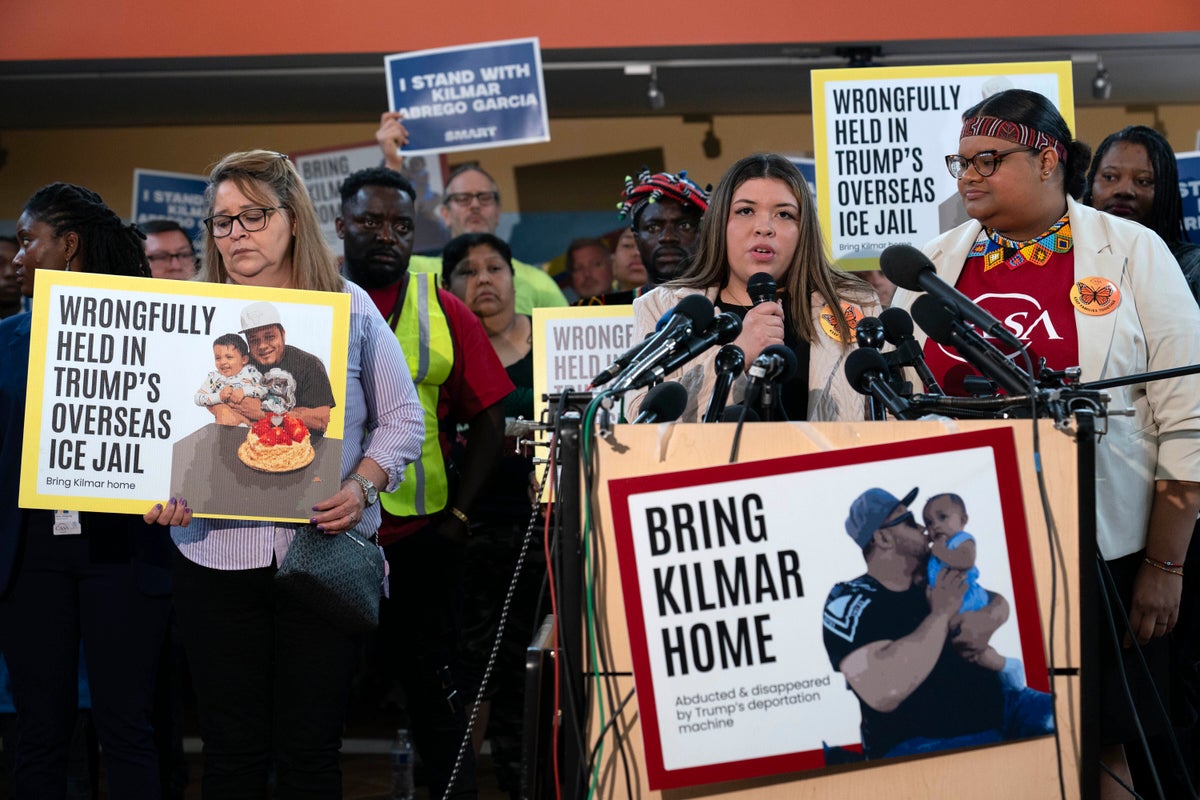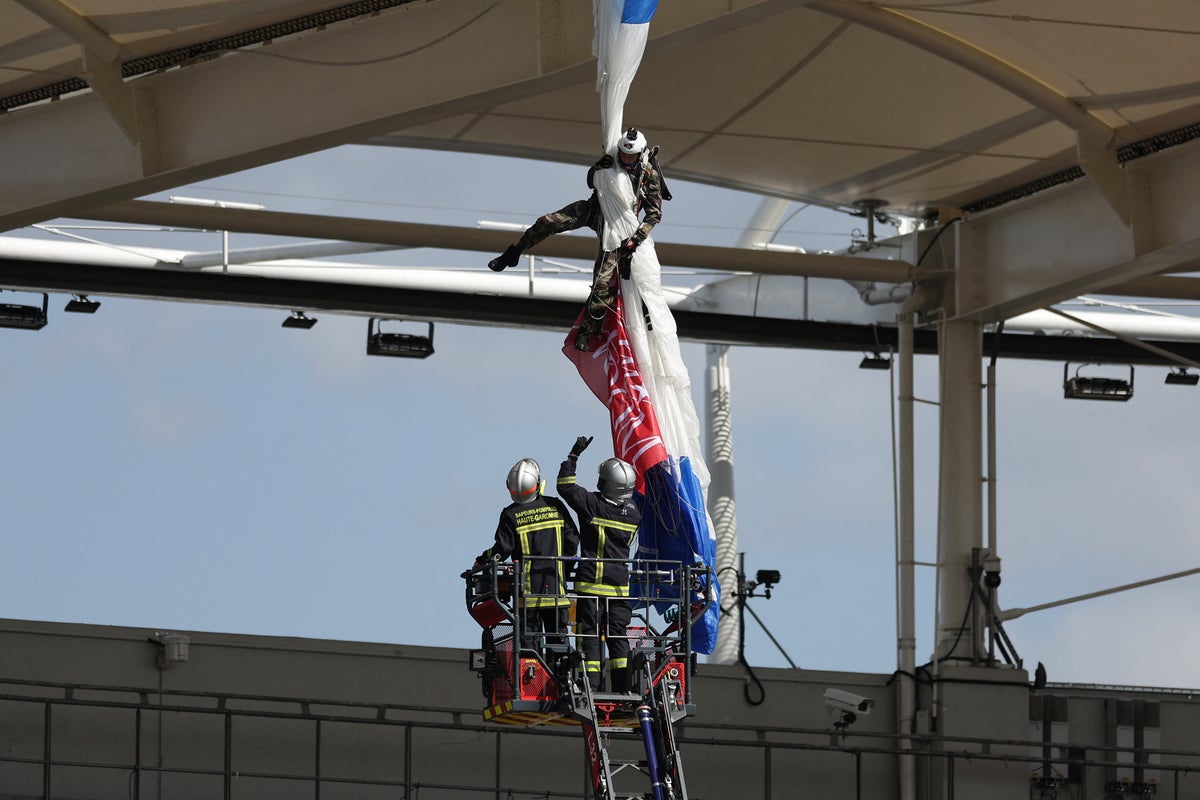It is a cliche to begin a story about a rally with a quote from a funny sign, but one small piece of floppy brown cardboard floating down 40th Street in Manhattan on Saturday seemed to capture the mood of this weekend’s “Hands Off” protests against President Donald Trump: “Where do I start?”
You could meet a dozen people and hear at least a dozen different existential threats. Hands off Social Security. Hands off public health grants. Hands off student visas. Hands off women. Hands off trans people. Hands off our tax dollars. Hands off Greenland. Hands off books. Hands off 401ks. Hands off immigrants. Hands off Mahmoud Khalil. Hands off grocery prices. Hands off unions. I even talked to a woman clutching a sign that said “Hands off Libby”—the popular e-reader for public library systems which is now in jeopardy thanks to massive cuts to the federal Institute of Museum and Library Services.
Trump’s second administration is “radically more radical,” protestors said. “Night and day.”
This barrage of grievances offered a snapshot of the new Trump administration’s multi-front war on modernity. But it also got at something essential about the current anti-Trump movement. People weren’t taking action just to protest what the president and his movement represented, but because of visceral fear—real fear—of what he had already done, and that once impossible things were now very much possible. People had lived through a Trump administration before. They were taking to the streets now, in part, because they had not lived through this.
That Saturday’s protests happened at all is notable. After Trump’s inauguration was not met with massive demonstrations, as it had been in 2017, a New York Times story declared the “Resistance” era over. But in recent weeks, as universities, law firms, big businesses, and most of the United States Congress have rolled over, rank-and-file Trump opponents have begun to make their anger heard. Hundreds of people began showing up at Tesla dealerships. Tens of thousands of people flocked to see Bernie Sanders and Alexandria Ocasio-Cortez. And this weekend, people flocked to rallies in all 50 states, in small towns and at massive demonstrations like the one I attended in New York, where tens of thousands of people packed Fifth Avenue for blocks, as part of a furious new popular front. You can stop asking where the mass opposition is now—it’s here.
“I’m a centrist in terms of politics in general,” Linda Brown of New York told me as she waited for the line to move. “But batshit crazy is batshit crazy.”
I spent a lot of time at anti-Trump demonstrations eight years ago, and the aesthetics now are, in a lot of ways, pretty similar to what they were back then. Saturday’s rallies were organized, in part, by Indivisible, the ur-Resistance group of the first Trump administration that grew from a Google Doc into a nationwide network. Cardboard signs displayed straight-from-social media nicknames (Cheeto, Muskrat, etc.) and droll complaints (“I’ve seen better cabinets at Ikea”). Attendees leaned white and boomer. I even saw a few pussy hats.
But if the crowd was similar, marchers I spoke with were responding to a threat they considered considerably more dangerous than the first time around. Trump 1.0 was chaotic and mean and ultimately quite destructive, but it was also—in hindsight—a shell of what it could have been. The administration was filled with a lot of weird guys with short attention spans. “Infrastructure week” became a punchline because it never really happened. But this time around, protestors were stunned by the speed of Trump and Musk’s demolition.
“They have fucked everything up in how many days, in how many months?” said Jewels Nation, a musician escaping the rain under a stretch of sidewalk scaffolding. “January, February, March—in three months, they have fucked us completely.” She was “terrified” about applying for Social Security, but her fears went deeper than just retirement savings; like other attendees, she believed that the United States had already become a “fascist state.”
The difference between then and now was “night and day,” said James Davis, president of the Professional Staff Congress, a union representing City University of New York faculty and staff. “It’s like he’s engineering a cultural revolution from the MAGA right, and now he’s working with no dissent whatsoever and expecting absolute fidelity and loyalty from everyone around him.” With one third of CUNY students being foreign born, and faculty dependent on visas and federal grants, the new administration was striking “at the heart of what we do,” he said.
The administration’s actions were affecting people who came out to the demonstration in tangible ways. Jill Pittman, a union collective-bargaining specialist from New Jersey who was marching alongside her young son, complained that Trump had gutted the Federal Mediation and Conciliation Service, which gets involved in labor disputes.
“I think they’re down to 12 people,” she said. “I use them every day—or used to use them every day.” What Trump was doing was severe enough that she was fearful for “the day that they make all labor unions illegal.”
Trump’s new administration was “radically more radical,” said Laurie Russell. “They’re so much more organized and focused with every single issue that is dear to our hearts, and eradicating everything.” In the first term, she said, “it was just sort of chaos and short-term difficulties.”
“Before we just hated him, we hated everything he stood for. And of course he was doing stuff,” explained Paul Demers. “But this is much broader.”
Trump’s attacks on universities, Deemers said, were a sign that the country was slipping into a Viktor Orban-style autocracy. “This is really more about democracy itself.”
This was just one protest in one place—albeit one very large protest in one very big place. Perhaps the vibes were different in Marshfield, Mass. or Salt Lake City or Bolivia, N.C. (Hopefully the weather was.) Ultimately the big story is not what the signs said, but the deep groundswell of anger and unrest that brought so many people in so many places out into the streets and other public spaces of their communities. The message is: crowd large. A lot of politicians and administrators and business leaders, in bowing to Trump, have drawn confidence and comfort from the perceived vibe shift. Events like this puncture that delusion. They are an unavoidable illustration of outrage. Trump may have gotten a lot undone in the last three months, but the opposition never went away, and it may finally be emboldened.
On Saturday, it showed that it is everywhere.














